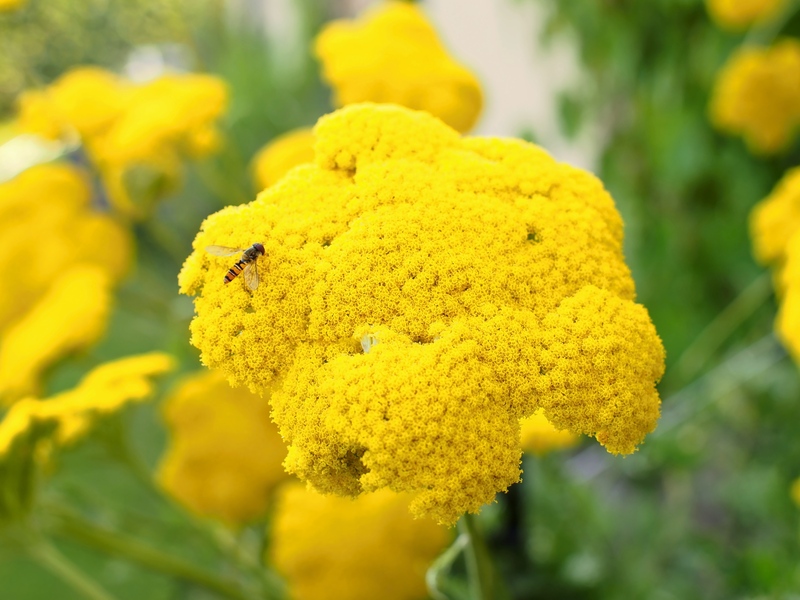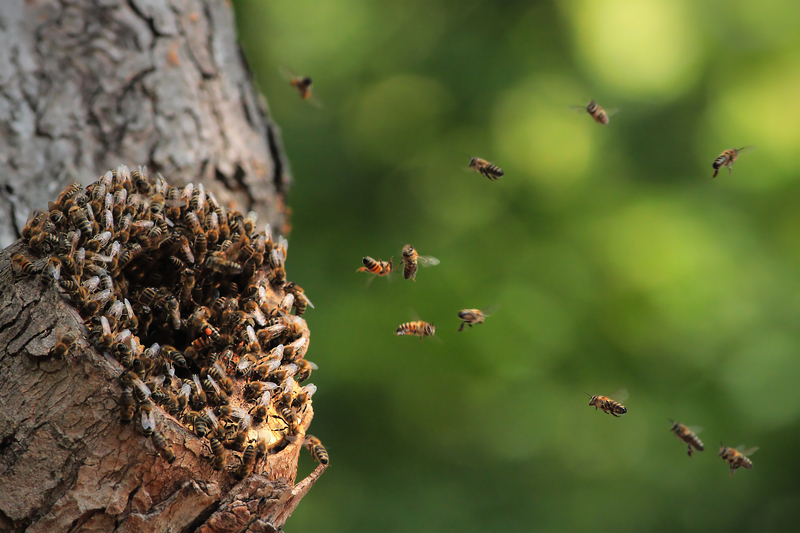Encouraging biodiversity in urban areas through garden design
Posted on 01/03/2024
is becoming increasingly important as cities continue to expand and natural habitats are being replaced with concrete and steel. With limited green spaces available, it is crucial that we prioritize creating urban gardens that not only provide aesthetic value but also support a diverse range of plant and animal species. In this article, we explore the benefits of encouraging biodiversity in urban areas and how garden design can play a significant role in achieving this.
Biodiversity refers to the variety of living organisms found within a specific ecosystem. In urban areas, there tends to be a lack of diversity due to the dominance of non-native and often invasive plant species. This results in a homogenized environment that lacks complexity and resilience.
Encouraging biodiversity in urban areas brings numerous benefits, both for humans and the environment. Firstly, it helps to create healthier ecosystems by providing food, shelter, and nesting sites for a diverse range of wildlife. This includes pollinators such as bees, butterflies, and birds, which play a crucial role in maintaining plant diversity.
Moreover, urban gardens that support biodiversity also contribute significantly to the overall health and well-being of city dwellers. By incorporating green spaces into our concrete jungles, we can improve air quality, reduce noise pollution, and create opportunities for outdoor recreation and relaxation.
Effective garden design can make a significant impact on enhancing biodiversity in urban areas. By incorporating native plants into our gardens, we can create micro-habitats that attract a wide range of insect and bird species. These plants have evolved alongside local wildlife and provide essential sources of food and shelter.
Creating multiple layers in our gardens such as tall trees, shrubs, groundcovers, and herbaceous perennials also adds complexity to the environment and supports a more diverse range of flora and fauna. Additionally, incorporating elements such as water features, log piles, and bird feeders can further enhance the biodiversity of our gardens.
Furthermore, garden design should take into consideration the principles of sustainable gardening, such as using organic methods for pest control and reducing water consumption. This not only benefits the environment but also creates a healthier and more natural habitat for wildlife to thrive in.
As with any approach, there are both pros and cons to encouraging biodiversity in urban areas through garden design. Some potential pros include improved air quality, increased green spaces for recreation, and an overall healthier ecosystem.
On the other hand, some potential cons may include the management and maintenance of a diverse garden, which could require more time and effort. There is also a risk of attracting certain wildlife species that may be perceived as pests by some individuals. However, with proper planning and maintenance, these potential challenges can be overcome.
Here are some tips for creating an urban garden that supports biodiversity:
1. Choose native plants: Native plants are adapted to local conditions and provide essential resources for local wildlife.
2. Create diverse layers: Incorporate vertical elements such as tall trees, shrubs, and climbing vines to create multiple layers in your garden.
3. Add water features: A small pond or birdbath can attract insects, birds, and other wildlife to your garden.
4. Avoid pesticides: Instead of using chemicals for pest control, try natural methods such as companion planting or hand-picking pests.
5. Provide nesting sites: Install birdhouses or create brush piles to provide shelter and nesting sites for various bird species.
Encouraging biodiversity in urban areas through garden design is crucial for creating healthier ecosystems and improving the well-being of city dwellers. It requires careful planning and maintenance, but the benefits are well worth the effort. By incorporating native plants, creating diverse layers, and avoiding harmful chemicals, we can create urban gardens that support a wide range of plant and animal species.
In conclusion, promoting biodiversity in urban areas through garden design is an essential step towards creating sustainable cities that support both humans and wildlife. By utilizing the right techniques and principles, we can create urban gardens that not only look beautiful but also attract and support a diverse range of living organisms. So let's do our part in encouraging biodiversity and make our cities greener and more vibrant places to live.
The Importance of Biodiversity in Urban Areas
Biodiversity refers to the variety of living organisms found within a specific ecosystem. In urban areas, there tends to be a lack of diversity due to the dominance of non-native and often invasive plant species. This results in a homogenized environment that lacks complexity and resilience.
Encouraging biodiversity in urban areas brings numerous benefits, both for humans and the environment. Firstly, it helps to create healthier ecosystems by providing food, shelter, and nesting sites for a diverse range of wildlife. This includes pollinators such as bees, butterflies, and birds, which play a crucial role in maintaining plant diversity.
Moreover, urban gardens that support biodiversity also contribute significantly to the overall health and well-being of city dwellers. By incorporating green spaces into our concrete jungles, we can improve air quality, reduce noise pollution, and create opportunities for outdoor recreation and relaxation.

The Role of Garden Design in Promoting Biodiversity
Effective garden design can make a significant impact on enhancing biodiversity in urban areas. By incorporating native plants into our gardens, we can create micro-habitats that attract a wide range of insect and bird species. These plants have evolved alongside local wildlife and provide essential sources of food and shelter.
Creating multiple layers in our gardens such as tall trees, shrubs, groundcovers, and herbaceous perennials also adds complexity to the environment and supports a more diverse range of flora and fauna. Additionally, incorporating elements such as water features, log piles, and bird feeders can further enhance the biodiversity of our gardens.
Furthermore, garden design should take into consideration the principles of sustainable gardening, such as using organic methods for pest control and reducing water consumption. This not only benefits the environment but also creates a healthier and more natural habitat for wildlife to thrive in.
The Pros and Cons of Biodiversity in Urban Gardens
As with any approach, there are both pros and cons to encouraging biodiversity in urban areas through garden design. Some potential pros include improved air quality, increased green spaces for recreation, and an overall healthier ecosystem.
On the other hand, some potential cons may include the management and maintenance of a diverse garden, which could require more time and effort. There is also a risk of attracting certain wildlife species that may be perceived as pests by some individuals. However, with proper planning and maintenance, these potential challenges can be overcome.
Tips for Promoting Biodiversity in Your Urban Garden
Here are some tips for creating an urban garden that supports biodiversity:
1. Choose native plants: Native plants are adapted to local conditions and provide essential resources for local wildlife.
2. Create diverse layers: Incorporate vertical elements such as tall trees, shrubs, and climbing vines to create multiple layers in your garden.
3. Add water features: A small pond or birdbath can attract insects, birds, and other wildlife to your garden.
4. Avoid pesticides: Instead of using chemicals for pest control, try natural methods such as companion planting or hand-picking pests.
5. Provide nesting sites: Install birdhouses or create brush piles to provide shelter and nesting sites for various bird species.

Takeaways
Encouraging biodiversity in urban areas through garden design is crucial for creating healthier ecosystems and improving the well-being of city dwellers. It requires careful planning and maintenance, but the benefits are well worth the effort. By incorporating native plants, creating diverse layers, and avoiding harmful chemicals, we can create urban gardens that support a wide range of plant and animal species.
In Conclusion
In conclusion, promoting biodiversity in urban areas through garden design is an essential step towards creating sustainable cities that support both humans and wildlife. By utilizing the right techniques and principles, we can create urban gardens that not only look beautiful but also attract and support a diverse range of living organisms. So let's do our part in encouraging biodiversity and make our cities greener and more vibrant places to live.




